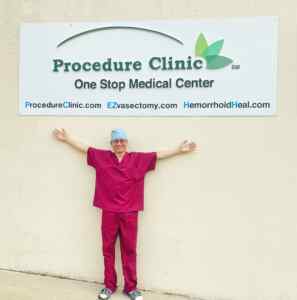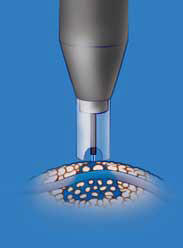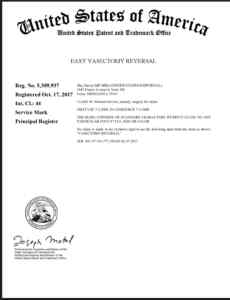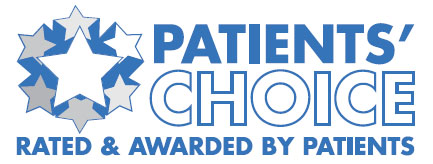Introduction
In the realm of reproductive medicine, vasovasostomy stands as a remarkable surgical procedure that offers renewed hope to couples who have experienced male infertility due to a previous vasectomy. This microsurgical technique, designed to restore the flow of sperm by reconnecting the vas deferens, has gained attention for its effectiveness in restoring fertility. In this blog, we delve into the intricacies of vasovasostomy, exploring its procedure, success rates, factors influencing outcomes, and its role in modern fertility treatments.
Understanding Vasovasostomy
 A vasectomy is a common form of birth control for men, involving the surgical cutting or blocking of the vas deferens—the tubes that transport sperm from the testes to the ejaculatory duct. However, life circumstances can change, prompting some men to desire the reversal of their vasectomy to regain the potential for fatherhood. Vasovasostomy, a microsurgical procedure, offers them this chance by delicately reconnecting the vas deferens.
A vasectomy is a common form of birth control for men, involving the surgical cutting or blocking of the vas deferens—the tubes that transport sperm from the testes to the ejaculatory duct. However, life circumstances can change, prompting some men to desire the reversal of their vasectomy to regain the potential for fatherhood. Vasovasostomy, a microsurgical procedure, offers them this chance by delicately reconnecting the vas deferens.
The Procedure
Vasovasostomy is a meticulous procedure that requires the expertise of a skilled microsurgeon. It is often performed under local anesthesia or general anesthesia. The surgeon accesses the vas deferens by making small incisions in the scrotum. Microscopic tools are then used to reconnect the two cut ends of the vas deferens, ensuring precise alignment and suturing. If sperm flow is successfully restored, the chances of natural conception increase.
Success Rates and Factors Influencing Outcomes
The success of vasovasostomy largely depends on several factors:
Conclusion
Vasovasostomy, with its microsurgical precision and potential to restore male fertility, remains a beacon of hope for couples seeking to expand their families after a vasectomy. As surgical techniques continue to advance and success rates improve, this procedure stands as a testament to medical ingenuity and the remarkable ways in which science can restore life-changing possibilities. While the journey to parenthood might encounter obstacles, vasovasostomy is a reminder that with the right expertise and determination, barriers can be overcome, and dreams can be fulfilled.
Note: One Stop Medical Center provides the service of Vasectomy Reversal. We have two office locations in Edina, Minnesota, and Casselberry, Florida. If you are interested in vasectomy Reversal, Please fill out the online registration first, we will call you in 2 business days, or please call us at 1-888-992-0019 if any questions.







 In a landmark study from the Vasovasostomy Study Group (VVSG) published in 1991, Dr. Arnold Belker and four other expert microsurgeons examined various facets of vasectomy reversal, including the risk of birth defects. Their trial, which followed 291 children born post-vasectomy reversal, found that only three of the 291 subjects displayed birth defects. That’s a one percent birth defect rate.
In a landmark study from the Vasovasostomy Study Group (VVSG) published in 1991, Dr. Arnold Belker and four other expert microsurgeons examined various facets of vasectomy reversal, including the risk of birth defects. Their trial, which followed 291 children born post-vasectomy reversal, found that only three of the 291 subjects displayed birth defects. That’s a one percent birth defect rate.  You may be familiar with the term “antibodies” as “something that helps the body ward off disease,” but the notion of sperm antibodies might seem counterintuitive. After all, why would the body want to destroy perfectly good sperm?
You may be familiar with the term “antibodies” as “something that helps the body ward off disease,” but the notion of sperm antibodies might seem counterintuitive. After all, why would the body want to destroy perfectly good sperm? After undergoing a vasectomy reversal, patients can expect a recovery process similar to that of their original vasectomy. Pain and swelling in the groin is to be expected for about 1-3 weeks, but most patients are able to return to work and daily activities within one week. Below is a breakdown of what to expect for post-surgery care and recovery:
After undergoing a vasectomy reversal, patients can expect a recovery process similar to that of their original vasectomy. Pain and swelling in the groin is to be expected for about 1-3 weeks, but most patients are able to return to work and daily activities within one week. Below is a breakdown of what to expect for post-surgery care and recovery:
 Myth: In Vitro Fertilization (IVF) is quicker and easier than having a vasectomy reversal.
Myth: In Vitro Fertilization (IVF) is quicker and easier than having a vasectomy reversal. Myth: Couples should not try to conceive right after a vasectomy reversal for fear of a “leftover, defective sperm.”
Myth: Couples should not try to conceive right after a vasectomy reversal for fear of a “leftover, defective sperm.”









